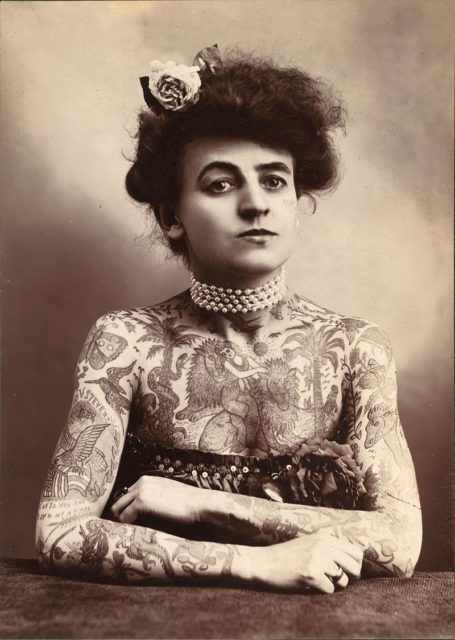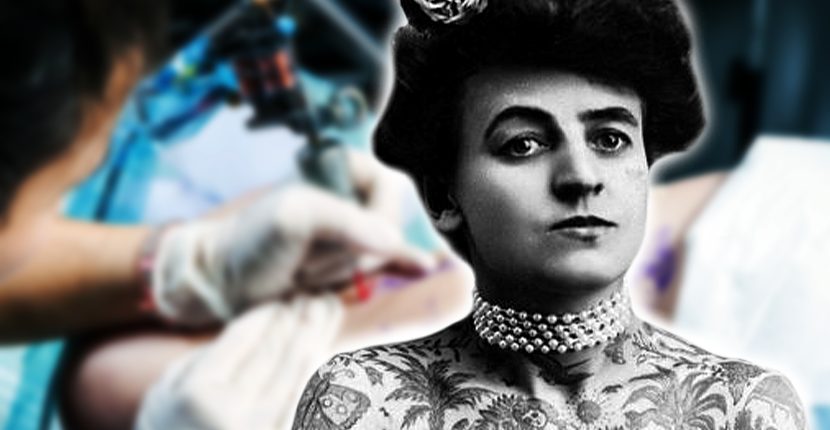Maud Wagner was born in 1877, in Lyon County, Kansas to David Van Buran Stevens and Sarah Jane McGee. She was the lady responsible for breaking the myths surrounding tattooed women in America. Although she lived during the Victorian era, that didn’t stop her from expressing her passion for tattoos and living her life the way she wanted.

Most women living during the Victorian period were rather humble, always decently dressed and thought that tattoos were a man’s ‘thing’. However, Maud proved to everyone that a woman can wear tattoos and look beautiful, and perhaps most importantly, need not be judged as immoral because of it.
Maud was an interesting person not only because of her tattooed body but also because of her profession. She worked as an aerialist and contortionist in numerous traveling circuses, where she met her husband Gus Wagner, a well-known tattoo artist who described himself as “the most artistically marked up man in America” while traveling among circuses and sideshows.
They met at the Louisiana Purchase Exposition (St. Louis World’s Fair) in 1904, where Maud was working as an aerialist. According to legend, she exchanged a romantic date with Gus for a lesson in tattooing and that’s how their story began. He taught Maud how to tattoo and shortly after she became a tattoo artist herself. Together they had a daughter, Lotteva, who also started tattooing at the age of nine and, following in the family tradition, also went on to become a tattoo artist.

The tattoos on Maud’s body had different meanings. Some were patriotic, and others symbolized animals, such as monkeys, snakes, lions, and butterflies. Wagner learned from Gus how to give traditional “hand-poked” tattoos—even though the tattoo machine had been invented. The Wagners were two of the last tattoo artists to work by hand, choosing not to use the aid of modern tattoo machines. In time she became a circus attraction after getting ‘addicted’ to the ink and was widely known as the Inked Woman.
After several years of dating, the tattooed couple got married. Afterwards they left the circus and started tattooing in vaudeville houses, amusement arcades, and country fairs. As a couple, they were a walking attraction. They traveled around the country, making a living both as tattoo artists and “tattooed attractions” in vaudeville houses, fairs and amusement parks.

They are credited with bringing tattoo artistry inland and to the masses. Before this tattooing had been predominately seen and done in coastal cities and towns where the practice had started due to sailors returning from exotic locales with fresh new tattoos inspired, and in many cases put on their skin, by the natives they had encountered in their travels around the Pacific Rim and Polynesia.
Read another story from us: Elaborately tattooed Egyptian mummy’s are 1st of their kind
Between them, with Gus as the most artistically marked up man in the land and Maud as the first female tattoo artist in America, they ruled the tattoo industry and spread the tattoo trend far from the places where the practice had first been seen in America.
Maud Wagner passed away on January 30, 1961, at the age of 84. She’s remembered as a remarkable lady who had the courage to teach women that tattoos aren’t just for men.
